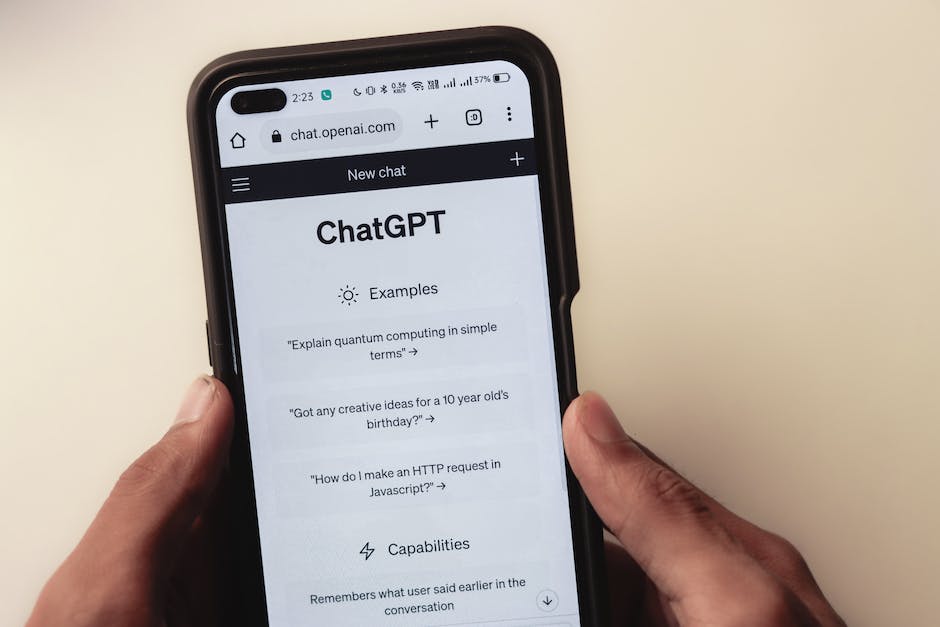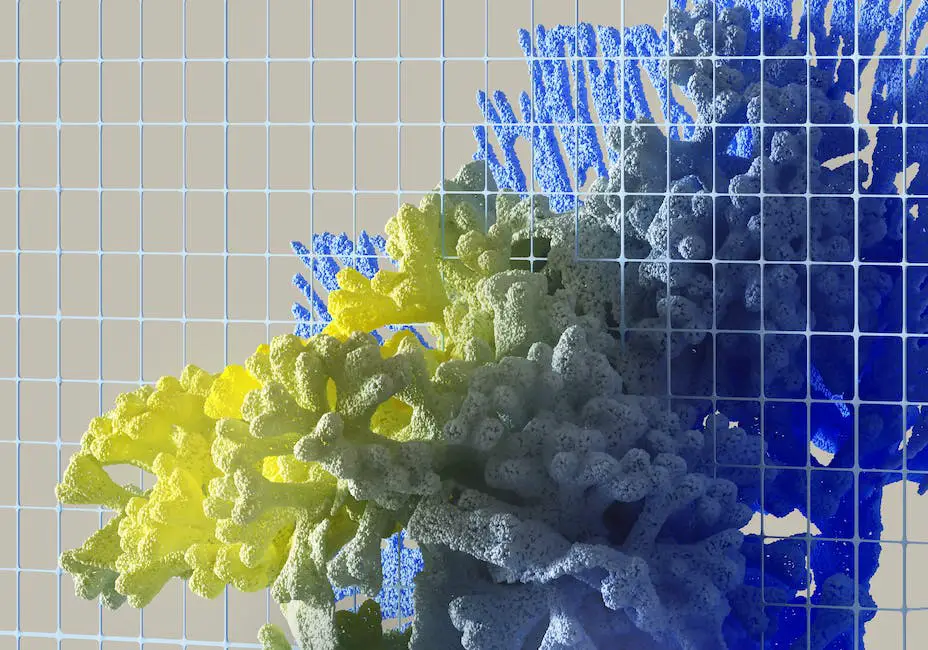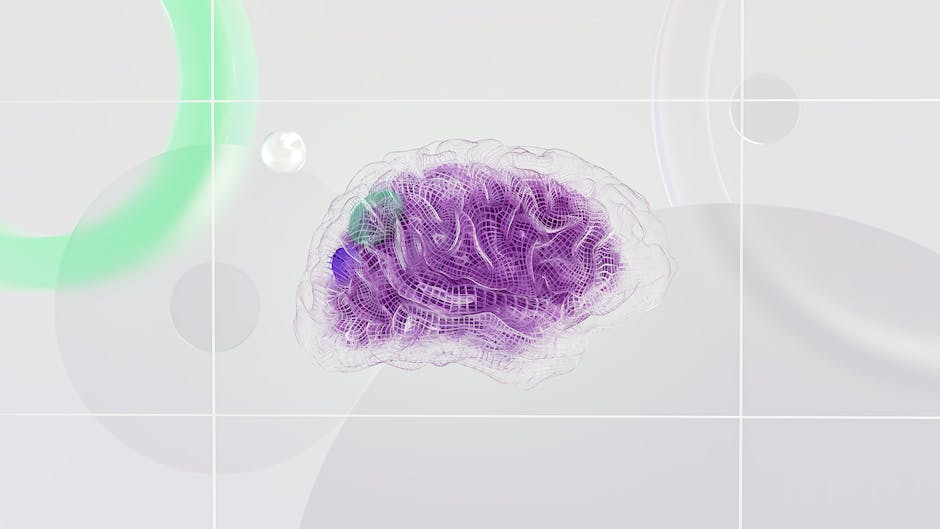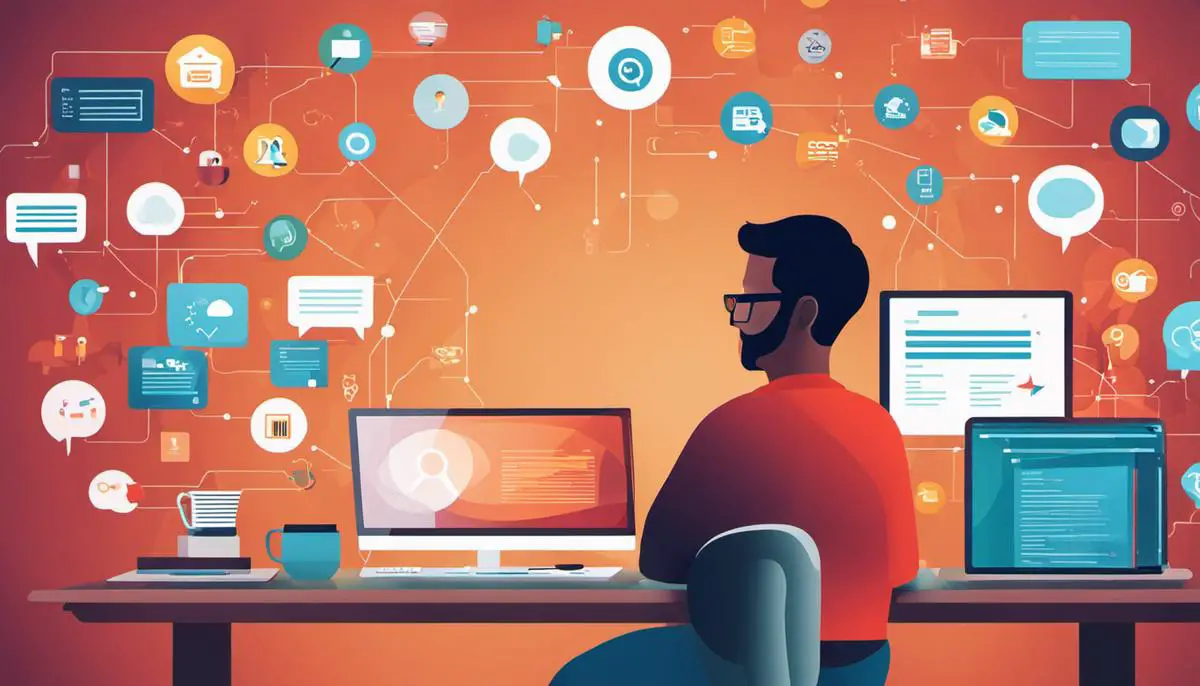The evolution of technology has revolutionized various spheres, but one of its most significant impacts is seen in the field of User Experience (UX) design. Compelling user experiences are no longer a luxury but a necessity in today’s digital age. Just as important is the rise of AI-powered chatbots like ChatGPT providing remarkable innovations and enhancements to UX design. This comprehensive exploration delves into the intricate relationship between UX design and ChatGPT, its significance, and the numerous benefits it offers. It also provides a clear understanding of how ChatGPT works to personalize UX, issues that may arise, their effective solutions, real-life implementations of AI chatbots, and forecasts about their future relevance in the realm of UX design.
Understanding UX and ChatGPT
Understanding UX and ChatGPT
User Experience (UX) refers to a person’s overall experience when using a system, product, or service. It focuses on how easy or pleasing these products, systems, or services are to use. UX is vital as it aims to meet the exact needs of the user, without fuss or bother. It ensures that the user finds value in what is provided to them.
Chatbots, like ChatGPT, boost user experience by providing real-time, accurate, and automated responses to queries, hence they help streamline complex customer service processes. ChatGPT, developed by OpenAI, utilizes machine learning to generate human-like text. It’s a conversational AI model that consists of two fine-tuned versions: gpt-3.5-turbo and instructGPT. These versions understand and generate language, answer questions, write essays, and tutor in an array of subjects.
The Intersection of UX and ChatGPT
ChatGPT is influencing the world of UX by simply evolving the way users interact with digital platforms. By combining the capabilities of AI and the dynamic features of chatbots, the UX world has significantly changed over the past few years. The shift toward automated, periodically learning, and intuitive interfaces that adapt to user behavior is becoming the new norm.
One common misconception about AI and chatbots in UX is the fear of losing the human touch. Although AI may automate certain processes, it does not necessarily replace the human element. Instead, AI augments human skills and allows them to focus on more complex tasks, hence enhancing the user experience.
Personalizing UX with ChatGPT
Personalizing UX with ChatGPT refers to the ability to tailor AI responses based on user behavior, preferences, and past interactions. Chatbots can become more familiar with users, providing personalized and relevant suggestions or responses. This maximizes user satisfaction and ensures a valuable and seamless user experience.
Personalizing UX with ChatGPT
Personalization in the context of UX refers to systems and interfaces that can be customized to meet the specific needs or requirements of a user. With the integration of ChatGPT into the UX, developers can now design AI-driven chat interfaces that not only respond to user requests but also learn and evolve based on those past interactions.
For instance, in a customer support scenario, ChatGPT could remember past interactions with a client and provide responses tailored to their history, preferences, and needs. This goes beyond simple automation, instead offering a truly personalized experience.
Techniques for Personalizing UX with ChatGPT
Some techniques for personalizing UX with ChatGPT include data analysis, machine learning, and AI-driven design. Firstly, data analysis helps identify user patterns and behaviors, which can be used to tailor interactions. Machine learning then helps translate this data into usable insights that enable further personalization. Lastly, AI-driven design allows for custom UI elements that cater to individual user preferences.
ChatGPT also has multi-turn conversation capability which remembers the input conversation history whenever the model is given a user message. This allows for context-based personalization, as the model learns from user preferences and prior chat history to deliver a more personalized experience.
To sum it up
Each day brings new advancements in the role of ChatGPT in personalizing UX. This presents an incredible array of opportunities for businesses to tailor their products and services to the unique desires and requirements of every client. With the application of ChatGPT in UX, there can be the creation of a user experience that’s not only efficient but also personalized and seamless.

Benefits of Personalizing UX with ChatGPT
Diving into the Role of ChatGPT in UX Design
Brought to fruition by OpenAI, ChatGPT is a highly sophisticated language model with the ability to generate human-like text. Being designed to both comprehend the nuances of a conversation and draft fitting responses, it elevates itself to an essential position in the enhancement of user experience (UX) in digital platforms. Its functionalities span beyond just engaging users conversationally, it also acquires and evolves to create increasingly personalized user interactions.
Improved User Interaction
One key benefit of integrating ChatGPT into UX design is the enhancement of user interaction. As ChatGPT can generate human-like text, it can conduct more engaging, natural conversations with users. It can respond to inquiries, receive commands, and provide various forms of assistance, offering an interface that is highly intuitive and user-friendly. The conversational capabilities of ChatGPT make it an excellent tool for improving user engagement and interaction.
Increased Customer Satisfaction
ChatGPT’s unique ability to understand and mimic human conversation can significantly improve the level of customer service provided by a platform. It can quickly and accurately provide information, solve problems, and answer questions, doing so 24/7, thereby enabling a higher level of service that can drive increased customer satisfaction.
Personalized User Experiences
The use of ChatGPT in UX design can lead to more personalized user experiences. The technology can learn from previous interactions with individual users, enabling it to provide tailored responses and generally enhance the relevance and appropriateness of its interactions. This level of personalization can result in improved user satisfaction and increased loyalty towards the platform.
Automation and Efficiency
ChatGPT is capable of handling a large number of user interactions simultaneously. This can significantly improve efficiency, especially in customer service applications, where it can automate responses to common queries, freeing human agents to handle more complex issues. This automation can also lead to substantial cost savings for businesses.
The Value Proposition of ChatGPT in Business
Implementing ChatGPT into your user experience (UX) design offers an array of advantages that go beyond boosting user interaction and satisfaction. A prime strength of ChatGPT is its scalability, capable of processing and responding to a large volume of queries without inflating the customer service budget. Furthermore, it records and analyzes data from user interactions, providing businesses with insightful feedback about their customers. This invaluable information can guide businesses in refining their services to better meet user needs.

Working Mechanism of ChatGPT in Personalizing UX
Diving Deeper into ChatGPT’s Inner Workings
ChatGPT, curated by OpenAI, stands as a prime example of how artificial intelligence (AI) can revolutionize communication between businesses and their users, thus refining UX. At its core, ChatGPT is a natural language prediction model. Trained on a variety of text from multiple sources across the internet, it has been fine-tuned to deliver the most human-like responses possible.
Rooted in transformer network architecture, a cornerstone for cutting-edge natural language processing tasks, ChatGPT excels in unsupervised learning. This methodology allows the model to discern and learn patterns in the data without explicit instructions, setting OpenAI far apart from conventional AI models. By virtue of this, ChatGPT can spawn an array of responses, taking cues from the language inputs it has been trained upon.
ChatGPT and User Personalization
The AI architecture of ChatGPT ensures a unique and personalized UX for each user. It is capable of tailoring its responses to the individual tastes and preferences of users. For example, in conversations, ChatGPT pays attention to factors such as language style, tone, or context provided by the user and responds based on those parameters. It can keep track of user preferences and reply to the user’s queries, hence personalizing the experience.
An innovative feature of the AI model is its potential to continuously learn from its interactions with the users. It takes into account the feedback from users to modify its understanding and response to inputs. This continuous learning mechanism and feedback adaptation make ChatGPT more user-centric and significantly enhance the personalized user experience.
Underpinning Technology: Machine Learning and Natural Language Processing
ChatGPT utilizes advances in machine learning and natural language processing to offer a superior UX. Machine learning enables ChatGPT to learn the language constructs and contextual nuances from its wide array of training data. For instance, the training model can identify and learn what constitutes a question, a command, a joke, or a sarcastic remark, enabling it to participate in diverse conversations.
Meanwhile, the natural language processing enables the AI model to understand and generate human-like responses. NLP incorporates contextual meanings, allowing the AI to respond accurately even to ambiguous queries. This combination of machine learning and natural language processing is fundamental in powering chatbots like ChatGPT, making them capable of offering a highly personalized UX.
The Role of Data in Personalization
ChatGPT relies heavily on data to provide personalized experiences. The training data, including a vast array of texts from the internet, feeds the AI with numerous conversation styles, tones, and contexts. This helps ChatGPT in mirroring human-like responses, setting it a notch higher than traditional chatbots.
As interactions progress, the model continues to store and process user data to enhance its response mechanism further. It can remember past conversations and adapt future responses accordingly, ensuring improved accuracy and relevancy, leading to a more personalized and enhanced user experience over time.
The Future of User Experience with ChatGPT
With ongoing advancements in AI technology, we can anticipate more sophisticated features being incorporated into chatbots such as ChatGPT. This evolution will likely boost personalization and improve user experience significantly. Enhanced machine learning and improved natural language processing capabilities promise more precise and relevant responses to user inputs. This incessant progress in AI models like ChatGPT indeed represents an exhilarating horizon for individualized user experience.

Case Studies of Successful ChatGPT Implementation
Personalized UX in Healthcare: The Babylon Health Case Study
In the healthcare sector, a glimpse into the successful integration of personalized UX can be seen in the UK-based digital healthcare service, Babylon Health. Their approach involves using AI-powered chatbots for patient consultations. Patients outline their symptoms to the chatbot, which then suggests potential diagnoses. Babylon Health utilizes GPT-3, the ancestor to ChatGPT, to create a chatbot that can discuss symptoms, guiding patients to determine whether they require a doctor’s attention or not.
Thanks to AI technologies like OpenAI’s GPT-3, Babylon Health can offer consistent responses to patient inquiries round the clock. Even though the initial stages posed challenges like getting the chatbot to grasp complex medical terminologies and symptoms, the team eventually achieved a seamless integration. The outcome was a substantial enhancement in user engagement and satisfaction.
ChatGPT in Retail: Shopify
Shopify, a multi-channel commerce platform, leverages AI chatbots for customer support and personalization. Shopify uses ChatGPT to power its customer service bots and provide a highly personalized shopping experience, suggesting items based on customer activity, answering product questions, and resolving complaints.
Shopify overcame potential challenges by implementing a continual process of feedback and refinement, honing the bot’s ability to comprehend complex customer queries and respond appropriately. As a result, the bot was able to seamlessly engage with customers, leading to improved customer satisfaction and increased sales.
ChatGPT in Banking: Bank of America’s Erica
Bank of America is another excellent example, bringing AI chatbots to the banking sector with its virtual assistant, Erica, which is powered by ChatGPT. Erica is designed to help customers with everyday banking needs. Through personalized support, Erica can send notifications to customers, locate past transactions, schedule payments, and provide insights on spending habits.
In designing Erica, the bank faced challenges ensuring the bot’s understanding of banking-related terms and security standards. However, through continuous improvement and refinement, Erica has become an irreplaceable banking tool. Erica has increased customer engagement and improved customer experience significantly, with over 10 million users interacting with the virtual assistant.
ChatGPT in Entertainment: OpenAI’s AI Dungeon
OpenAI’s own AI Dungeon game represents a case study in using ChatGPT to create interactive narratives in gaming. AI Dungeon uses ChatGPT to react to any user input, allowing for personalized and ever-evolving narratives.
One challenge in this context was programming the bot to generate creative and coherent responses regardless of user input. However, AI Dungeon successfully turned this into a unique selling point. With over 1.5 million users, AI Dungeon has engaged audiences and pushed narrative gaming to a new level of customization.
The power of AI chatbots like ChatGPT when it comes to enhancing the user experience is well-evident through its successful deployments across diverse industries. Sure, there were initial hiccups with understanding complex user requirements and a requirement for ongoing refinement to provide superior user experiences. But the potential is undeniable.

Potential Challenges and Solutions in Implementation
Grasping Potential Challenges in Advancing with ChatGPT
The task of integrating ChatGPT into your UX strategy isn’t without its hurdles. First, you have to ensure data privacy. As AI carries out conversations with users, it accumulates and interprets user data to offer personalized experiences. This situation opens up potential privacy and ethical issues.
Another key challenge lies in the realm of AI ethics. As systems like ChatGPT are data-driven learners, there’s a risk they might pick up and replicate biases present in the input data. This underlines the urgent need for regulations and supervision during AI model development to make sure it upholds human values and norms.
There’s also the potential for technical roadblocks during the process of introducing ChatGPT. These might involve struggles in embedding the technology into existing platforms, system errors or maintaining the AI’s performance during periods of high traffic.
Software glitches that negatively impact the AI’s performance could interfere with the UX, leading to user dissatisfaction and thus causing interactions drop-offs. Similarly, performance issues during periods of heavy traffic could trigger customer disgruntlement which highlights the importance of maintaining efficient performance.
Practical Solutions and Recommended Best Practices
To address data privacy, companies should have a clear policy outlining what personal data is collected, how it’s used and stored, and measures to ensure its security. The AI should ask for explicit user consent before collecting and using personal data. The use of end-to-end encryption and secure data centers could further protect user data.
To tackle AI ethical considerations, companies could involve ethicists in the AI development process to ensure the model is fair, unbiased, and respectful of user values. Regular audits of the AI model can ensure it stays within ethical boundaries.
Implementing Scaling techniques can help manage technical challenges; this includes using cloud-based solutions that can easily scale to handle increased demand. Additionally, comprehensive system testing is crucial to identify and rectify system errors before going live.
To boost performance during high traffic times, companies should consider load balancing and implementing robust infrastructure to support the AI’s operations. Regular maintenance and updates are essential to ensure the AI operates at its peak performance.
Constant Evaluation and Improvement
One of the key aspects in the deployment of ChatGPT is the inclusion of constant testing and user feedback. This process, done continuously, enables firms to explore and improve the AI’s capacity to personalize the user experience (UX). Such testing and fine-tuning can drastically uplift and modify the UX to be more in-line with users’ expectations and preferences. Remember, user comfort and satisfaction should be paramount while deploying any AI tool.

Future of Personalizing UX with ChatGPT
AI and UX: A Dynamic Duo
The advent of Artificial Intelligence (AI), capable of absorbing, learning, and processing massive data, has transformed the world of user experience (UX). AI brings the power of personalization, fitting the services to the distinct needs and tastes of the users. A strong testament to this is the introduction of AI Chatbots, particularly Generative Pretrained Transformer 3 (ChatGPT).
ChatGPT: Redefining Personalized UX
ChatGPT and other AI chatbots supercharge personalized user experiences by recognizing and learning from user interactions and tendencies over time. These discerned patterns become the foundation of anticipating user requirements, customizing suggestions, and streamlining application navigation.
For instance, ChatGPT can grasp a user’s preferences and understand their language patterns, thereby fueling more instinctual, user-centered interactions. The aim here is to build a conversational partner that interacts with users on a personal level.
Future Implications of ChatGPT for Personalized UX
As AI and machine learning technologies evolve, tools like ChatGPT will also progress, opening pathways for further UX personalization. It’s envisioned that these tools will soon predict user needs, even before the user realises them.
Consider predictive modeling which can allow companies to automate support to an unprecedented extent — Chatbots would foresee common user problems and offer solutions proactively. This breakthrough not only expedites UX but also slashes the need for time and resource-intensive customer service.
In the future, tools like ChatGPT may offer more polished natural language understanding, paving the way for even more conversational and ‘human-like’ interactions. The future may hold AI-powered UX experiences that are hard to distinguish from human interactions.
Staying Ahead of the Curve
Companies that aspire to lead in this ever-evolving landscape need to embrace an AI-first approach. This involves injecting AI capabilities like ChatGPT into their digital platforms and user interfaces to take full advantage of the changing trends.
Harvesting and analyzing data is critical to train machine learning algorithms to improve the personalization abilities of AI agents like ChatGPT. Companies should also invest in AI and UX design research to pioneer novel solutions.
Furthermore, companies must manage the change an AI-first approach will usher in. It is important to empower employees to understand and utilize the promise of AI tools and promote a culture that fosters learning and innovation in the realm of AI.
To sum it all, the AI revolution has just begun to impact UX design. With tools like ChatGPT, we’re opening a new chapter in how users engage with digital platforms. As businesses harness the power of AI, they can aim to offer more bespoke, efficient, and game-changing experiences for their users.

Indeed, as we sail further into the digital age where the essence of human-computer interaction gets revolutionized, there is no denying that tools like ChatGPT will play a leading role in reshaping the landscape of UX design. The integration of ChatGPT into UX design holds immense promise, providing highly personalized, efficient, and satisfying user experiences. But like any technological tool, it comes with its set of challenges. However, with thoughtful, ethical implementation and a commitment to ongoing evolution based on learning and user feedback, these challenges can be effectively surmounted. The imminent future belongs to businesses that can harness the power of AI chatbots like ChatGPT optimally, staying in the vanguard of an ever-evolving user experience paradigm.
